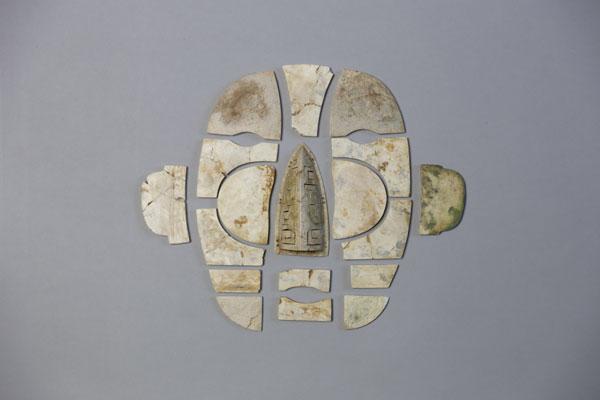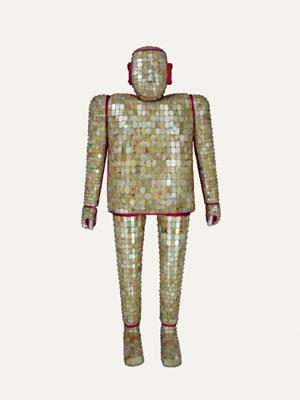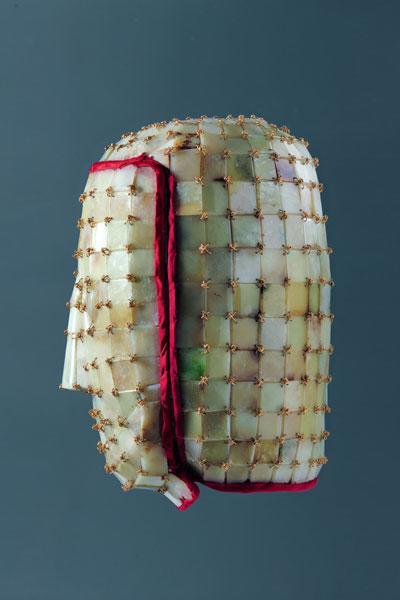From: Ecns.cn 15 July 2014
![A silver tiger, found in Shenmu county, Shaanxi province, is believed to date back to between the Warring States Period (475-221 BC) and the Han Dynasty.[Photo provided to China Daily] A silver tiger, found in Shenmu county, Shaanxi province, is believed to date back to between the Warring States Period (475-221 BC) and the Han Dynasty.[Photo provided to China Daily]](http://www.ecns.cn/2014/07-15/U363P886T1D124141F12DT20140715110237.jpg)
A silver tiger, found in Shenmu county, Shaanxi province, is believed to date back to between the Warring States Period (475-221 BC) and the Han Dynasty.[Photo provided to China Daily]
Valuable Chinese relics are to be exhibited in France, giving European visitors a glimpse of the rich traditions of the Han Dynasty.
It is probably the largest exhibition of Chinese relics outside the country. Curators describe it as "an unrivaled show" as it explains why the majority of Chinese are called the Han people and why they speak the language of Han people and write Han characters. The exhibition, Han Dynasty, will open at the Musee Guimet in Paris in October, and will display about 457 artifacts that bear testimony to the dynamism of the Middle Kingdom.
The exhibition, which celebrates the 50th anniversary of the Sino-French diplomatic relations, will present a retrospective of the Han Dynasty (206 BC-AD 220), the empire that had profound and long-lasting influences on Chinese history. Antiquities, including dozens of national grade one collections, are on loan from 27 Chinese museums and cultural institutions. They provide various perspectives on the dynasty's administration system, its agriculture, its alliances with bordering countries and the start of Silk Road through which it communicated with the West.
"The exhibition will demonstrate the most complete and beautiful gems of the Han Dynasty, helping people to understand the foundation of Chinese civilization," says Sophie Makariou, director of the Musee Guimet.
"One of the highlights of the exhibition is the juxtaposition of archaeological discoveries made over the past five decades, which continue to renovate Chinese archaeology."
These breakthroughs have been largely achieved during burial excavations, with the objects found revealing the relationship between emperors and feudal princes. Terracotta warriors are some of the best examples of the imperial power, which come from the mausoleum of Liu Qi (188-141 BC), the empire's fourth emperor, which has been turned into a museum in Xi'an. Visitors will also see lamps and incense burners from the tomb of Liu Sheng (165-113 BC), son of Liu Qi and titled Prince Jing of Zhongshan.
![A bronze pot unearthed from the tomb of Liu Sheng (165-113 BC), or, Prince Jing of Zhongshan, in Mancheng county, Hebei province.[Photo provided to China Daily] A bronze pot unearthed from the tomb of Liu Sheng (165-113 BC), or, Prince Jing of Zhongshan, in Mancheng county, Hebei province.[Photo provided to China Daily]](http://www.ecns.cn/2014/07-15/U363P886T1D124142F12DT20140715110148.jpg)
A bronze pot unearthed from the tomb of Liu Sheng (165-113 BC), or, Prince Jing of Zhongshan, in Mancheng county, Hebei province.[Photo provided to China Daily]
The funeral objects formed an affluent underground world in which the tombs' owners hope their soul could live in luxury. A jade suit sewn with gold threads that is a national treasure is one of the items on display. The fragile suit, which is more than 2,000 years old, was found in an imperial tomb in the Lion Mountain of Jiangsu province in 1995. It features 4,248 pieces of high quality jade and is considered a magnificent example of Han's jade processing technique.
Makariou says that the excavation of Han emperors' mausoleums is rare, and by appreciating burial objects unearthed from princes' tombs, people can picture the extravagance of the imperial family and the rulers' belief in eternity.
The exhibition will also attest to the diverse civil life outside the imperial palace. People today can get a glimpse of the luxuries of times past through the display of wooden architectural models, silk fabrics and musical instrument. There are also examples of cultural life. As bamboo sheets were replaced by silk and paper, writing became an art form. Lishu, the script first written by clerks, was adopted by more people and eventually evolved into different styles.
"All the exhibits are intricately pulled together by a tomb, a city and a journey. The mausoleum of Liu Qi shows the empire's ruling system; Xi'an shows the prosperity of an ancient capital and the Silk Road realized the communications of trade and culture between two civilizations," says Yao An, deputy director of Art Exhibitions China. The body under the State Administration of Cultural Heritage has organized and toured about 200 Chinese relic exhibitions, Han Dynasty included, around the world ever since its establishment in 1971.
"The exhibition traces back to the root of how Chinese culture and the temperament of Chinese people have taken shape," she says.
Han Dynasty will run from Oct 22 to March 1, 2015, along with forums, film screenings and concerts that expose European viewers to the Han Dynasty from multiple perspectives.

A jade mask unearthed from a Han Dynasty tomb in the Shuangru Mountain in Jinan, Shandongprovince.[Photo provided to China Daily]

A jade suit sewn with gold threads was found in an imperial Han Dynasty tomb in the Lion Mountain of Jiangsu province.[Photo provided to China Daily]

The head of the jade suit.
1 comment:
will there be inclusion of Han Dynasty fashion, dance, and court music and shadow puppetry which originated in the court of a Han emperor
Post a Comment